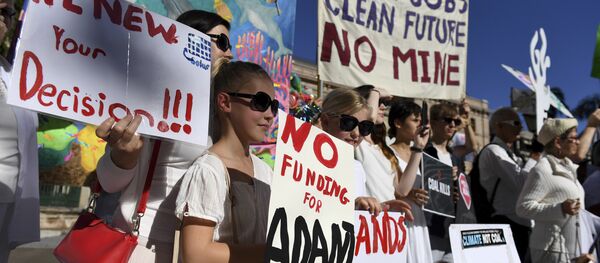New Delhi (Sputnik) — Australia's largest rail freight operator Aurizon has announced its withdrawal of an application for a $777 million state-backed loan on Friday to build a rail line to assist the development of the Galilee Basin, one of the world's largest untapped coal reserves. The decision by Aurizon has dealt a huge setback to Indian mining groups, Adani and GVK Hancock, which are struggling to garner funds to start the development of coal mines in the basin.
Aurizon said that it is withdrawing its loan application to the Northern Australia Infrastructure Facility (NAIF), a government body, as it was unable to thrash out a contract with potential customers.
"Our NAIF application is, in part, predicated on having customer contracts secured. Given this is unlikely to occur in the near future we believe it is prudent to withdraw the NAIF application," Andrew Harding, Aurizon managing director and chief executive, said in a statement.
"If market circumstances change and our discussions with potential customers progress to commercial arrangements, we will look at all possible financing arrangements to develop the rail solution," he added.
The company faced the first major blow last year when the government of Queensland — where the Carmichael coal block is located- vetoed its application for a Northern Australia Infrastructure Facility (NAIF) loan of $650 million for building the 388km rail line to connect the Carmichael coal mine to the seaport from where the company expects to export coal to India.
READ MORE: Adani's Carmichael Setback Shadows its Collaboration With SAAB
In December, Adani had to cancel a $1.5 billion outsourcing contract it had signed with Australian engineering and infrastructure services provider Downer EDI for the development and operation of the Carmichael coal mine project. A cash crunch was cited as the main reason behind the cancellation of the deal. The project included expanding the Abbot Point port, which according to environmentalists, cut into the Great Barrier Reef World Heritage area. Apart from threatening the world heritage area, environmental activists claimed that the project would pump 700 metric tons of carbon dioxide into the air every year for over half a century.



